 |
||||||||||||||||||||||||
 |
 |
|||||||||||||||||||||||
 |
||||||||||||||||||||||||
 |
 |
 |
 |
|||||||||||||||||||||
| 2015 CIRCLES | 2014 CIRCLES | 2013 CIRCLES | 2012 CIRCLES | |||||||||||||||||||||
|
||||||||||||||||||||||||
 |
 |
|||||||||||||||||||||||

|
Ground Report Ė Hat Gate Cottage, Nr. Wootton Rivers, Wiltshire, 14/07/07It's a risky business to disregard the notice: PRIVATE - NO ACCESS and I was probably lucky to get away with it! My visit, however, was brief, so any observations were made at lightning speed, with one eye on the crop, the other over my shoulder! I am not advocating this behaviour, but I could see no alternative in this instance as I felt this crop circle needed documenting on the ground. 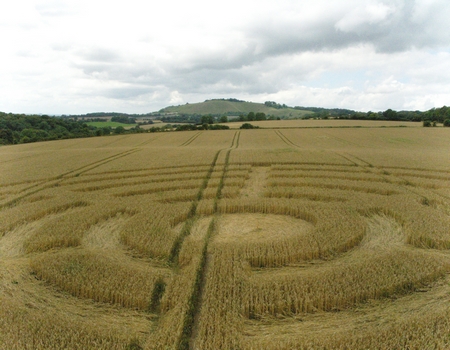
Initially, it is clear to see that most of the crop here is laid relatively close to the ground, particularly in the main pathways. Although it has been there a few days, there does not aapear to be a great deal of recovery. 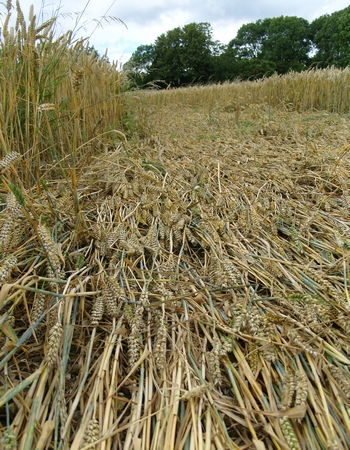
It is at the end points of each of the curved 'arms' where the crop is laid much more lightly, that more interesting features are to be observed. Rather than flowing around the end of each 'squared' end, the crop simply flows up to a point, then stops. 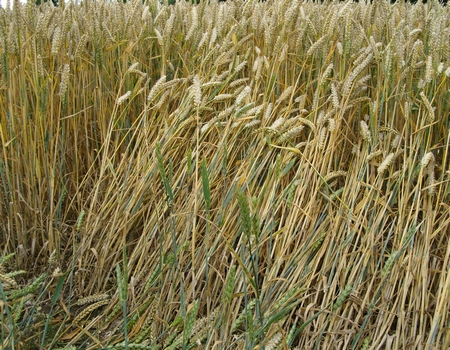
The effect on the ground is that each edge looks 'soft' as there is not a sharp cut off point to the end. This is not reflected in the aerial shots, however, which show a very clearly defined pattern. The image below shows how even where tramlines are next to this 'cut off' point, the gentle flow still occurs. 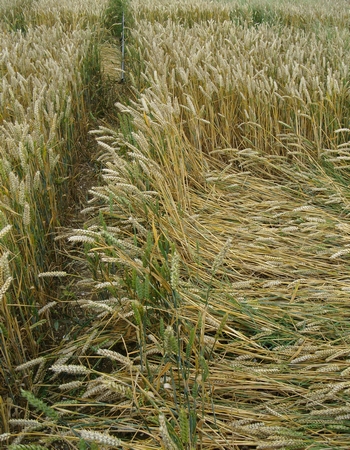
This is a really delicate feature of this formation, and one that is not that commonly seen. Although my brief visit did not allow me to examine the condition of the laid stems throughout the formation, those areas I did observe appeared to show very little damage. 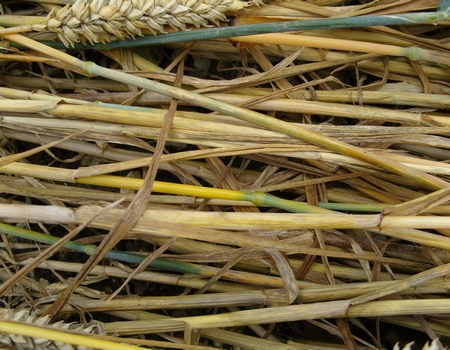
There is also a neat central tuft, with crop swirled around it in the central circle, which is not connected to the rest of the design directly. 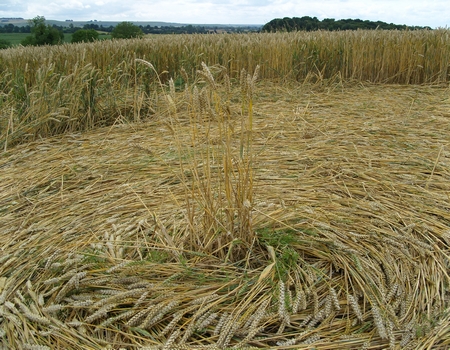
As each of the 'arms' flows towards it's end, there is a point in the centre where the laid crop spreads outwards in opposing directions. Here, as can be seen in the image below, a bare patch of soil is exposed as if the crop has been 'combed' outwards. Again, this is a feature of the lay which is less commonly seen, so very exciting to find! 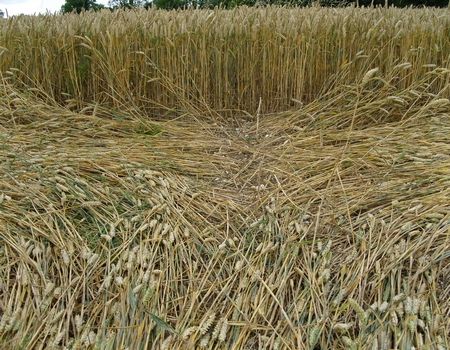
The general flow of the crop throughout this formation appears fluid and light. In some areas this can be seen better than others, the image below is a particularly good example. 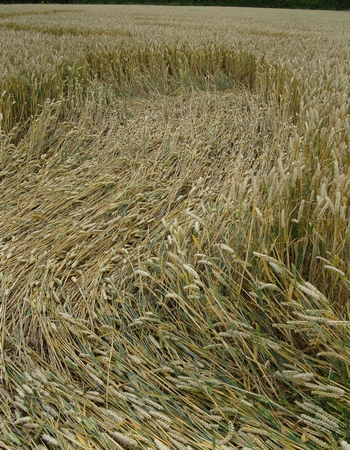
Another interesting feature here is that there are various different species of plant which have been caught up in the flow as the crop has been laid. The two examples below show green plants laid alongside the wheat. In some cases different species seem unaffected but in this instance everything has been laid together. 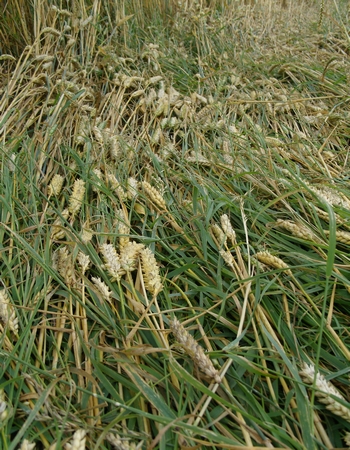
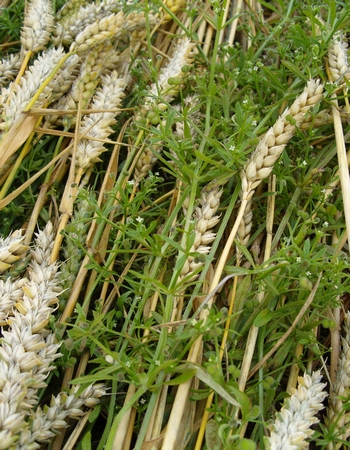
I am sometimes amazed at how much information can be gained in such a short time! Working under pressure in this way, I am sure I missed loads of intricate and fascinating details, but what I did see made the trip very worthwhile indeed. In my opinion this is a crop circle which from the air and on the ground alike is of a high quality. I hope any of you who were lucky enough to visit early on, or who risked the fence jump noticed the things you just donít see every day! 
Crop Circle Summary
Alternative Websites |

